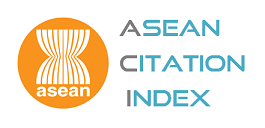Factors Predicting Quality of Nursing Care Among Registered Nurses in Myanmar: A Cross-sectional Study
DOI:
https://doi.org/10.60099/prijnr.2024.266967Keywords:
General Hospitals, Job satisfaction, Myanmar, Nurses, Nurse work environment, Nurse staffing, Quality of Nursing Care, Work experienceAbstract
High-quality healthcare is essential for community well-being and positive health outcomes. Healthcare settings, therefore, should deliver timely, equitable, integrated, efficient, effective, safe, and people-centered service. As in other countries, the COVID-19 pandemic and the nursing shortage crisis have impacted Myanmar’s nursing care quality. A cross-sectional study was conducted to examine the predictability of nurse staffing, educational levels, work experience, nurse work environment, and job satisfaction on the quality of nursing care among 218 registered nurses from five general hospitals in the Republic of the Union of Myanmar during July and September 2022. Data were collected using the Demographic and Nurse Staffing Data Form, the Practice Environment Scale of the Nursing Work Index, the Job Satisfaction Survey, and the Good Nursing Care Scale. The data were examined using descriptive statistics and a stepwise multiple regression analysis.
Results revealed that the overall quality of nursing care as perceived by nurses was high. The significant predictors of the quality of nursing care from the highest to the lowest were nurse work environment, nurse staffing, work experience, and job satisfaction, explaining 56% of the variance in the quality of nursing care. This study provides vital evidence for creating strategies to enrich and sustain the quality of nursing care in Myanmar and possibly other countries. Nursing directors should work with the government to produce and recruit more nurses, allocate budgets for care, and create a supportive work environment for nurses to improve healthcare quality.
References
World Health Organization. Quality of health. 2023 [cited 2024 Jan 3]. Available from: https://www.who.int/ health-topics/quality-of-care
Juanamasta IG, Aungsuroch Y, Fisher ML, Gunawan J, Iblasi AS. An integrative review of Indonesia’s quality of care. Int J Publ Health Sci. 2023;12(2):606-13. doi: 10.11591/ijphs.v12i2.21767. DOI: https://doi.org/10.11591/ijphs.v12i2.21767
Koy V, Yunibhand J, Angsuroch Y, Turale S, Rojnawee S. Registered nurses’ perceptions of factors influencing nursing care quality: a structural equation modeling study. Nurs Health Sci. 2020;22(1):91-8. doi: 10.1111/nhs.12653. DOI: https://doi.org/10.1111/nhs.12653
Xue X, Kunaviktikul W, Abhicharttibutra K, Wichaikhum O-A. Causal modelling of factors influencing quality of nursing care in China. Pacific Rim Int J Nurs Res. 2023; 27(3):417-30. Available from: https://he02.tcithaijo.org/index.php/PRIJNR/article/view/261537 DOI: https://doi.org/10.60099/prijnr.2023.261537
Kyaw HK, Than KK, Diaconu K, Witter S. Community stressors and coping mechanisms in accessing the health system during a double crisis: a qualitative case study from Yangon Region, Myanmar. Int J Equity Health. 2023; 22(1):39. doi: 10.1186/s12939-023-01851-4. DOI: https://doi.org/10.1186/s12939-023-01851-4
Phyo A. Nursing workforce analysis in Myanmar [master’s Thesis]. [Mandalay]: University of Nursing; 2019.
Sharma SK, Rani R. Nurse-to-patient ratio and nurse staffing norms for hospitals in India: a critical analysis of national benchmarks. J Family Med Prim Care. 2020; 9(6):2631-7. doi: 10.4103/jfmpc.jfmpc_248_20. DOI: https://doi.org/10.4103/jfmpc.jfmpc_248_20
Han SM, Lwin KS, Swe KT, Gilmour S, Nomura S. Military coup during COVID-19 pandemic and health crisis in Myanmar. BMJ Glob Health. 2021;6(4):e005801. DOI: https://doi.org/10.1136/bmjgh-2021-005801
Myint LL. Factors related to the quality nursing care as perceived by staff nurses in the Yangon general hospitals in the Union of Myanmar [master’s thesis]. [Chiang Mai]: Chiang Mai University; 2010.
Maung T. Nursing care among nurses, military hospitals, the Republic of the Union of Myanmar [master’s thesis]. [Chiang Mai]: Chiang Mai University; 2012.
Aiken LH, Clarke SP, Sloane DM, Sochalski JA, Busse R, Clarke H, et al. Hospital staffing, organization, and quality of care cross-national findings. Int J Qual Health Care. 2002;14(1):5-14. doi: 10.1093/intqhc/14.1.5. DOI: https://doi.org/10.1093/intqhc/14.1.5
Leino-Kilpi H, editor. Patient as an evaluator of nursing services. Proceedings of the Congress in Nursing Administration; Hellenic Graduate Nursing Association, Kavala, Greece; 1996.
Nantsupawat A, Poghosyan L, Wichaikhum OA, Kunaviktikul W, Fang Y, Kueakomoldej S, et al. Nurse staffing, missed care, quality of care and adverse events: a cross-sectional study. J Nurs Manag. 2022;30(2):447-54. doi: 10.1111/jonm. 13501. DOI: https://doi.org/10.1111/jonm.13501
Lake ET. Development of the practice environment scale of the nursing work index. Res Nurs Health. 2002;25(3): 176-88. doi: 10.1002/nur.10032. DOI: https://doi.org/10.1002/nur.10032
Finch JA. Quality of nursing care and its relationship to work environment from the perspective of bedside nurses [dissertation]. [Tennessee]: Middle Tennessee State University; 2022.
Spector P. Job satisfaction: application, assessment, causes, and consequences. Thousand Oaks, CA. 1977 [cited 2024 Jan 27]. Available from: https://sk.sagepub.com/books/job-satisfaction
Bi X, Zhang Q, Niu JY, Chen CY, Liu Z, Ning LW, et al. The occurrence of work-related fatigue and job satisfaction in nursing staff to the quality of care: a cross-sectional survey in north-east China. Res Sq [Preprint]. 2021 [cited 2024 Jan 1]. Available from: https://doi.org/10.21203/rs.3.rs-844733/v1 DOI: https://doi.org/10.21203/rs.3.rs-844733/v1
Boamah SA, Read EA, Spence Laschinger HK. Factors influencing new graduate nurse burnout development, job satisfaction and patient care quality: a time‐lagged study. J Adv Nurs. 2017;73(5):1182-95. doi: 10.1111/jan.13215. DOI: https://doi.org/10.1111/jan.13215
Farman A, Kousar R, Hussain M, Waqas A, Gillani SA. Impact of job satisfaction on quality of care among nurses on the public hospital of Lahore, Pakistan. Saudi J Med Pharm Sci. 2017;3(6A):511-9.
Kounenou K, Aikaterini K, Georgia K. Nurses’ communication skills: exploring their relationship with demographic variables and job satisfaction in a Greek sample. Procedia Soc Behav Sci. 2011;30:2230-4. DOI: https://doi.org/10.1016/j.sbspro.2011.10.435
Liu Y, Aungsuroch Y. Factors influencing nurse-assessed quality nursing care: a cross-sectional study in hospitals. J Adv Nurs. 2018;74(4):935-45. doi: 10.1111/jan.13507. DOI: https://doi.org/10.1111/jan.13507
Maghsoud F, Rezaei M, Asgarian FS, Rassouli M. Workload and quality of nursing care: the mediating role of implicit rationing of nursing care, job satisfaction and emotional exhaustion by using structural equations modeling approach. BMC Nurs. 2022;21(1):273. doi: 10.1186/s12912-022-01055-1. DOI: https://doi.org/10.1186/s12912-022-01055-1
Spetz J. Projections of progress toward the 80% Bachelor of Science in Nursing recommendation and strategies to accelerate change. Nurs Outlook. 2018;66(4):394-400. doi: 10.1016/j.outlook.2018.04.012. DOI: https://doi.org/10.1016/j.outlook.2018.04.012
Audet LA, Bourgault P, Rochefort CM. Associations between nurse education and experience and the risk of mortality and adverse events in acute care hospitals: a systematic review of observational studies. Int J Nurs Stud. 2018;80:128-46. doi: 10.1016/j.ijnurstu.2018.01.007. DOI: https://doi.org/10.1016/j.ijnurstu.2018.01.007
Polit DF, Beck CT. Key concepts and steps in qualitative and quantitative research: nursing research generating and assessing evidence for nursing practice. Wolters Kluwer Health; 2017.
Zar PEE. The relationship between hospital work environment and nurse outcomes [master’s thesis]. [Mandalay]: University of Nursing; 2017.
Wai CT. Professional values, job satisfaction and job perfomance of nurses in (1000) bedded general hospital, NayPyitaw [master’s thesis]. [Mandalay]: University of Nursing, Mandalay; 2020.
Lake ET, Friese CR. Variations in nursing practiceenvironments: relation to staffing and hospital characteristics. Nurs Res. 2006;55(1):1-9. doi: 10.1097/00006199-20060 1000-00001. DOI: https://doi.org/10.1097/00006199-200601000-00001
Osborne JW, Waters E. Four assumptions of multiple regression that researchers should always test. Pract Assess Res Eval. 2019;8(1):2. doi: 10.7275/r222-hv23.
Poon YSR, Lin YP, Griffiths P, Yong KK, Seah B, Liaw SY. A global overview of healthcare workers’ turnover intention amid COVID-19 pandemic: a systematic review with future directions. Hum Resour Health. 2022;20(1): 70. doi: 10.1186/s12960-022-00764-7. DOI: https://doi.org/10.1186/s12960-022-00764-7
Htun YM, Aung T, Kyi MS, Shan NH, Winn ZT, Thu KS, et al. Trajectory of confirmed cases and deaths: fourth wave of COVID-19 epidemic in Myanmar. Virol J. 2023;20(1):3. doi: 10.1186/s12985-023-01960-0. DOI: https://doi.org/10.1186/s12985-023-01960-0
Jo S, Kurt S, Bennett JA, Mayer K, Pituch KA, Simpson V, et al. Nurses’ resilience in the face of coronavirus (COVID-19): an international view. Nurs Health Sci. 2021;23(3):646-57. doi: 10.1111/nhs.12863. DOI: https://doi.org/10.1111/nhs.12863
Myanmar Nurse and Midwife Council. Core competencies for MNMC registered nurses and midwives. 2015 [cited 2024 Jan 1]. Available from: http://www.mnmcmyanmar.org/assets/Core-Competency-File-Size-Small.pdf
Damiran D, Akkadechanunt T, Sirakamon S. Head nurses’ authentic leadership and job satisfaction among nurses in general hospitals, Central Region, Mongolia. Nurs J. 2018;45(4):203-16. Available from: https://he02.tci-thaijo.org/index.php/cmunursing/article/view/162725
Wei H, Sewell KA, Woody G, Rose MA. The state of the science of nurse work environments in the United States: a systematic review. Int J Nurs Sci. 2018;5(3):287-300. doi: 10.1016/j.ijnss.2018.04.010. DOI: https://doi.org/10.1016/j.ijnss.2018.04.010
Lucas P, Jesus É, Almeida S, Araújo B. Relationship of the nursing practice environment with the quality of care and patients’ safety in primary health care. BMC Nurs. 2023;22(1):413. doi: 10.1186/s12912-023-01571-8. DOI: https://doi.org/10.1186/s12912-023-01571-8
Luengo-Martínez C, Paravic-Klijn T, Moreno MB. Influence of working conditions on the perception of the quality of care of nursing professionals. Index Enferm. 2021;30(1-2): 29-33.
Ying L, Fitzpatrick JM, Philippou J, Huang W, Rafferty AM. The organisational context of nursing practice in hospitals in China and its relationship with quality of care, and patient and nurse outcomes: a mixed‐methods review. J Clin Nurs. 2021;30(1-2):3-27. doi: 10.1111/jocn.15486. DOI: https://doi.org/10.1111/jocn.15486
Morrison AL, Beckmann U, Durie M, Carless R, Gillies DM. The effects of nursing staff inexperience (NSI) on the occurrence of adverse patient experiences in ICUs. Aust Crit Care. 2001; 14(3):116-21. doi: 10.1016/s1036-7314(01)80028-x. DOI: https://doi.org/10.1016/S1036-7314(01)80028-X
Andersen IA, Kleiven OT, Kyte L, Pettersen MAS. Quality of care and job satisfaction in a Hospital Trust before and after The Coordination Reform in Norway. Nurs open. 2020;7(6):1707-14. doi: 10.1002/nop2.554. DOI: https://doi.org/10.1002/nop2.554
Downloads
Published
How to Cite
Issue
Section
Categories
License
Copyright (c) 2024 Pacific Rim International Journal of Nursing Research

This work is licensed under a Creative Commons Attribution-NonCommercial-NoDerivatives 4.0 International License.
Copyright: The Pacific Rim International Journal of Nursing Research, Thailand Nursing & Midwifery Council has exclusive rights to publish, reproduce and distribute the manuscript and all contents therein.








.png)



